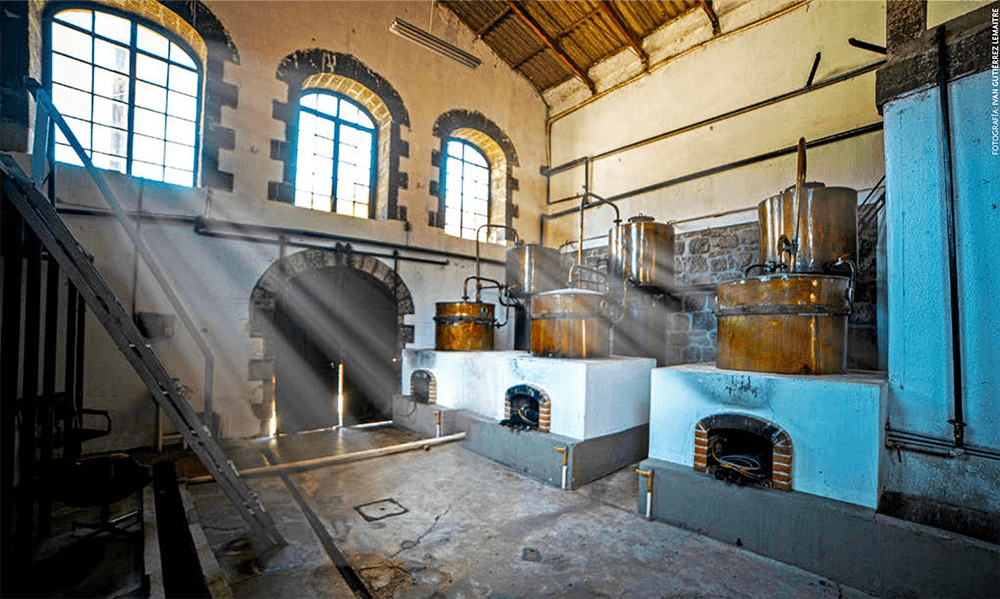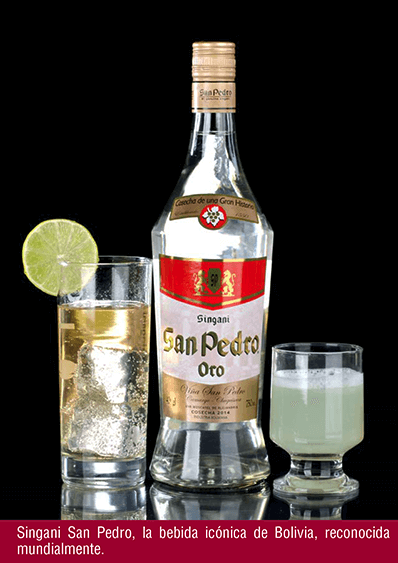San Pedro, the paradigmatic Bolivian singani, is born in the Cinti Valley where Dominican friars planted, at the beginning of the Colony, the first strain of Muscat of Alexandria grapes. They cultivated vines, formed vineyards and distilleries to obtain this globally recognized beverage.
Issue 124 | 2023
Raúl Serrano
Behind the name Singani San Pedro, there is a story that has been told for centuries and begins in the Cinti Valley, where Dominican missionaries found the ideal soil for grape cultivation. Around 1550, they founded Viña San Pedro Mártir, initiating winemaking in this part of America, the aging of wine, and the production of the aguardiente that gained a significant market in Potosí during colonial times. Cinti, and particularly San Pedro, are the paradigms of vineyards and their precious fruits, especially the Muscat of Alexandria grape, the sweetest of all varieties introduced by the missionaries.
In the 16th century, the silver exploitation in Porco, the foundation of the city of La Plata (headquarters of the Audiencia de Charcas), attracted many Spaniards to this part of America. Moreover, with the discovery of the Cerro Rico de Potosí, the most important center of the Viceroyalty of Peru emerged, and Potosí held a favored position among the largest cities of its time. This center required enormous quantities of products, including thousands of liters of wine and aguardiente consumed in liturgical celebrations but also in the hard work of mining, festivities, and celebrations.

“That is the identity of the product coupled with its quality as the best distillate of Muscat of Alexandria grapes, a delicacy that we must learn to appreciate.”

VIÑA SAN PEDRO AND POTOSÍ
The history of Viña San Pedro is closely linked to Potosí and records the trajectory of five family branches of owners who were prominent figures in the economy, politics, and society of their time. In Viña San Pedro, they planted vines, formed vineyards, set up presses to obtain sweet must, fired clay jars and jugs, made leather wineskins, and expanded technology to distill wine into aguardiente. They installed falcas and stills.
A historical investigation conducted over 20 years, led by historian Esther Aillon and summarized in the work “San Pedro: Witness of the Times.” Through the route of singani in Bolivia. 16th to 21st centuries, reflects the trajectory of San Pedro Mártir, recounting the passage of each of its owners.

The first branch of the succession was formed by Captain Alonso de Fonseca Falcon from the region of Algarve, Portugal. He was followed by the wealthiest man in colonial Potosí, Maestre de Campo Antonio Lopez de Quiroga (1620-1699), whose family remained on the estate for 114 years. The Spanish captain Pedro Antonio de Anzoleaga (18th century), his son-in-law Indalecio Gonzales de Socasa, and his daughter constitute the third family branch over 77 years.
In the times of the Republic’s birth, Viña San Pedro was led by María Josefa Lizarazu de Linares, Countess of the Royal House of the Mint, admired for her dominant character as a promoter of cultural values. After the founding of Bolivia, she supported Marshal Antonio José de Sucre on April 28, 1828, in the Voltígeros Battalion rebellion. Josefa was succeeded by her son Mariano Linares Lizarazu (1819-1869) and her granddaughter Lucrecia Linares Romero de Calvo (1867-1928).
The Calvo family branch continues this tradition, renewed with the presence of Carlos Calvo Galindo, who acquired majority control of San Pedro in 1973, purchased new vineyards, and modernized the country’s first winery. In parallel, Calvo Galindo implemented a comprehensive social plan at San Pedro, covering education and health issues and promoting research that documents the five-century history of Viña and Bodega San Pedro. This family branch has been at San Pedro for 50 years.
SINGANI SAN PEDRO, THE NATIONAL DRINK
Singani is the national drink, and San Pedro is the first Bolivian singani, writing its history since 1550. It has been and is a witness to the times in Bolivia. With San Pedro and its most versatile combinations, festivities, traditional Bolivian games, cacho, gastronomic marathons, and an endless variety of ways to celebrate life arrived. That is the product’s identity coupled with its quality as the best distillate of Muscat of Alexandria grapes, a delicacy that we must learn to appreciate.

Since 1980, San Pedro has promoted many important export actions, which have been successfully recorded and undoubtedly precede the current international recognition of the name Singani. In the 20th century, the product has been exported to the United States, Japan, various European countries, and many in the region. San Pedro has not ceased throughout this time to promote the values of viticulture in Cinti, encouraging grape production.

